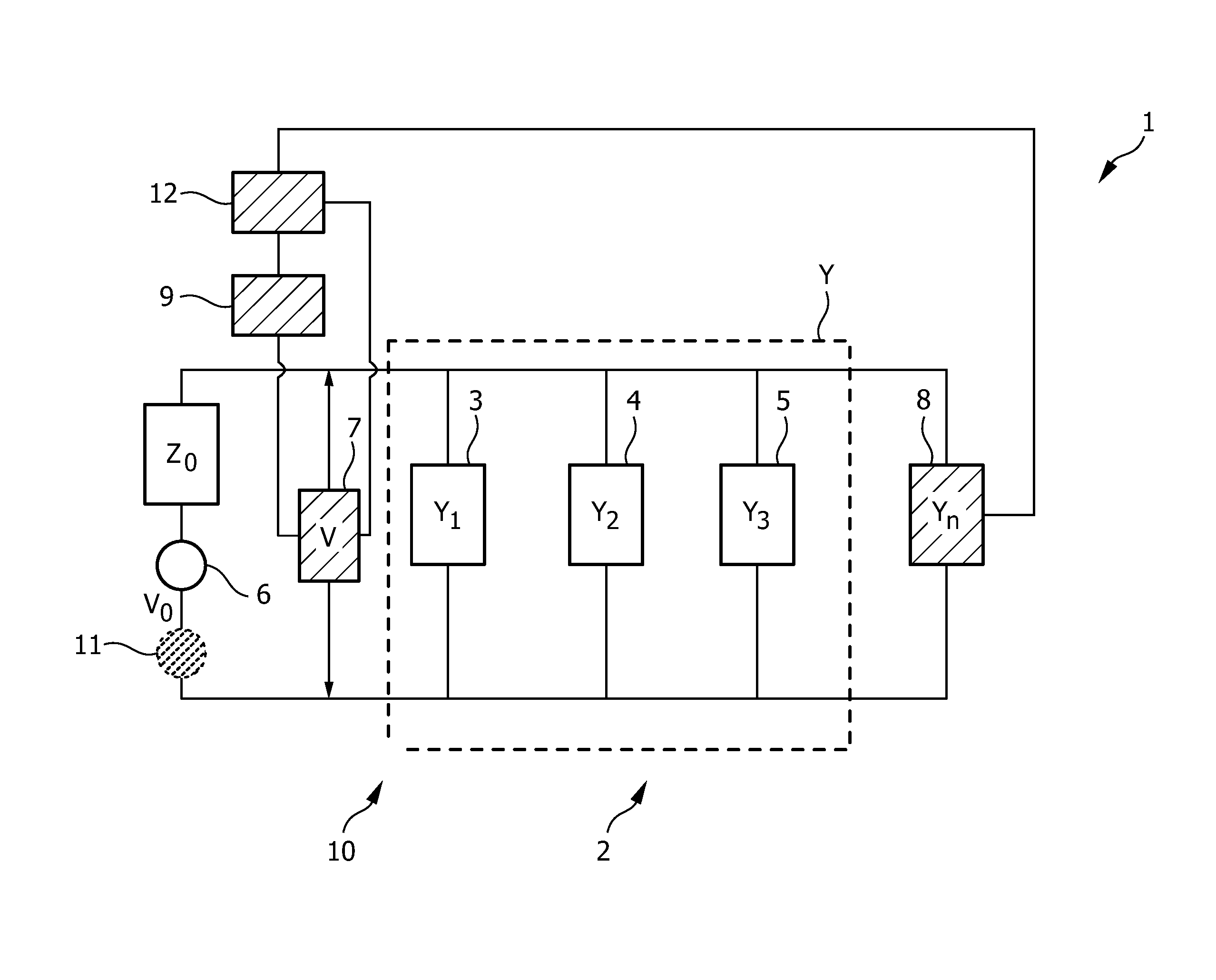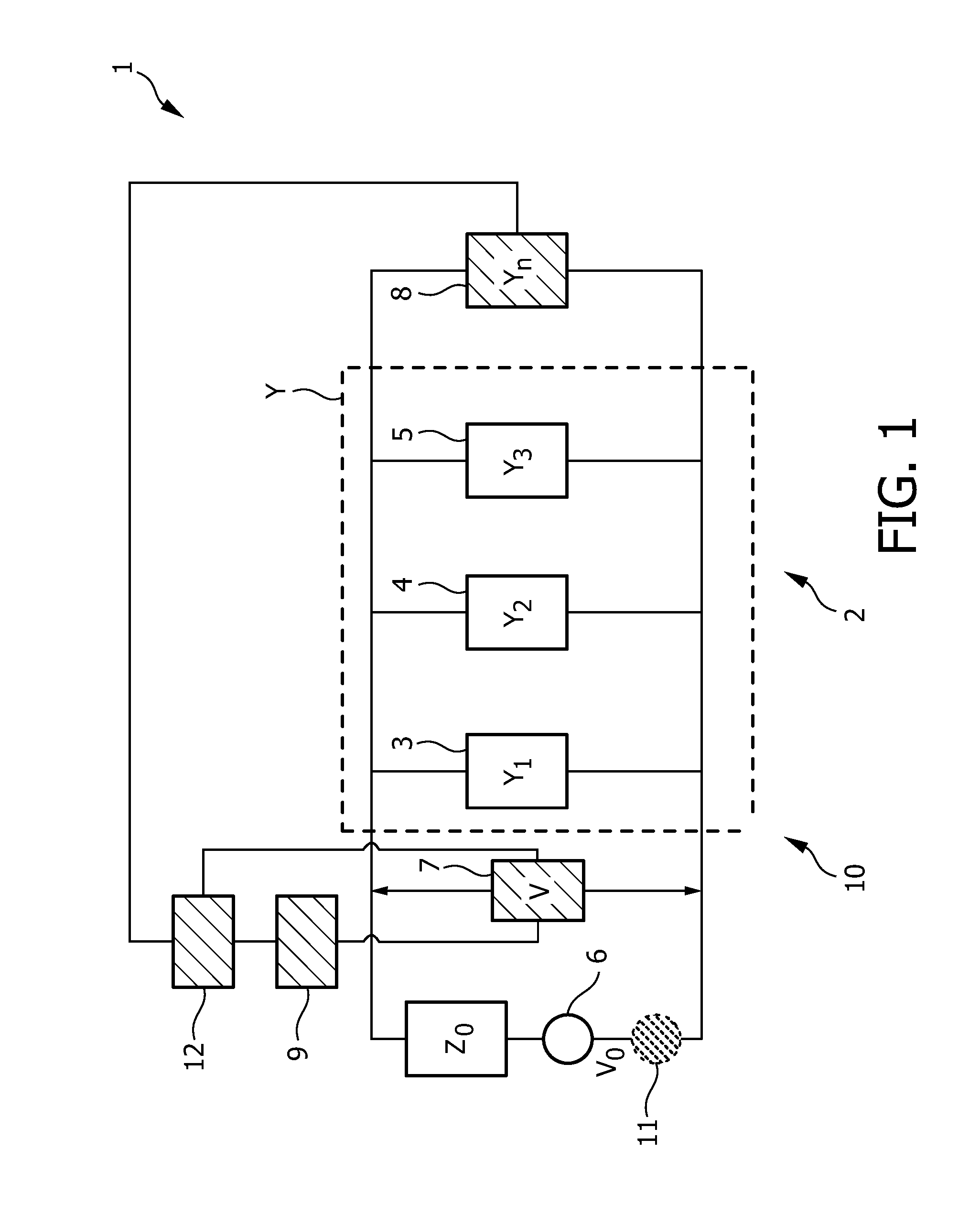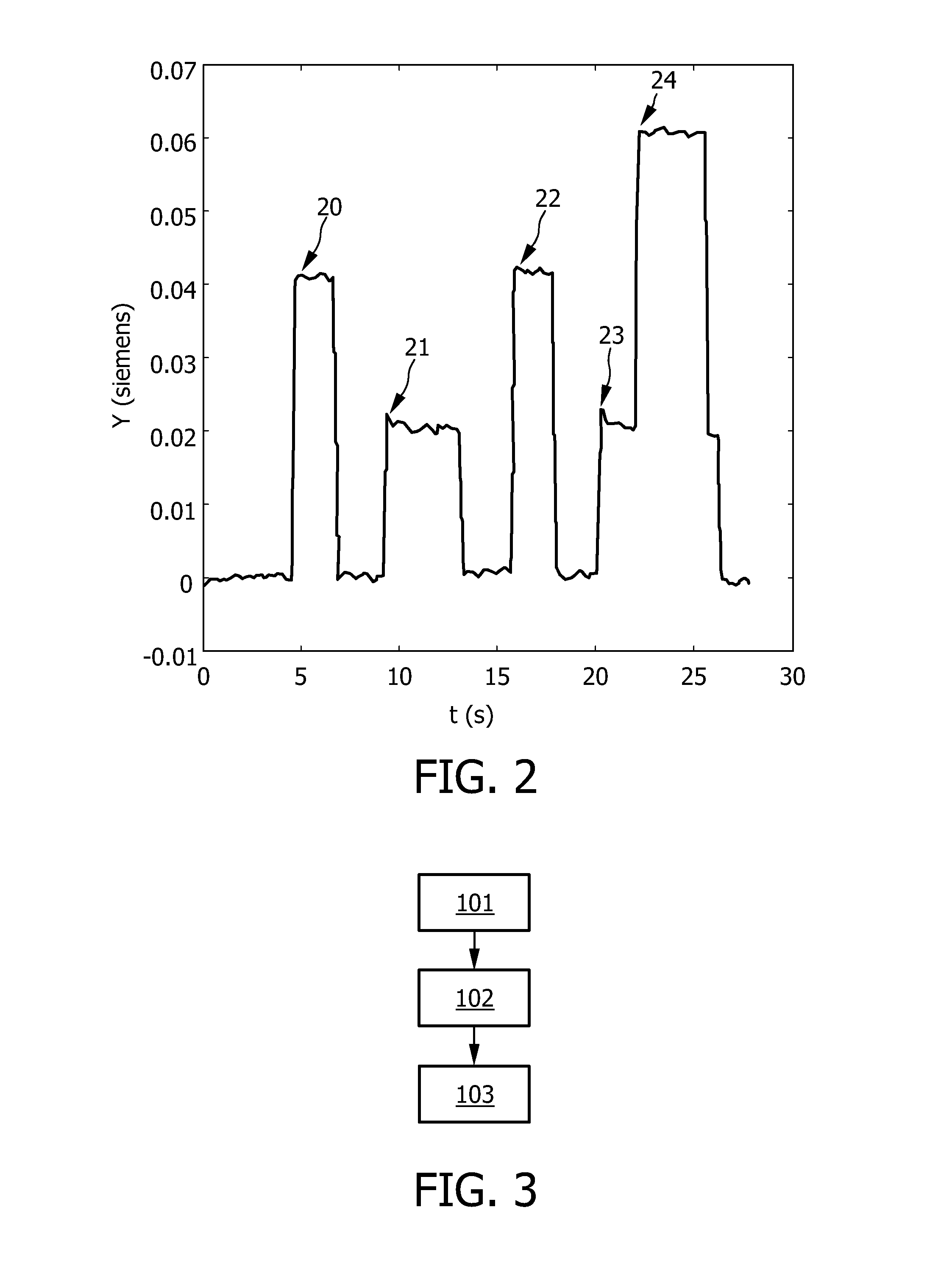Disaggregation apparatus for identifying an appliance in an electrical network
- Summary
- Abstract
- Description
- Claims
- Application Information
AI Technical Summary
Benefits of technology
Problems solved by technology
Method used
Image
Examples
Embodiment Construction
[0032]FIG. 1 shows schematically and exemplarily a system 10 comprising an electrical network 2 and a disaggregation apparatus 1 for identifying an appliance in the electrical network 2. The electrical network 2 comprises multiple appliances 3, 4, 5 which are powered by a power source 6. In FIG. 1, the elements of the disaggregation apparatus 1 are shaded.
[0033]The disaggregation apparatus 1 comprises a voltage meter 7 for measuring a first change in a mains voltage V delivered to the appliances 3, 4, 5 of the electrical network 2, while an operational state of an appliance is modified. The disaggregation apparatus 1 further comprises a switchable load 8, wherein the voltage meter 7 is adapted to measure a second change in the mains voltage V delivered to the appliances 3, 4, 5 of the electrical network 2, while the switchable load 8 is switched. The disaggregation apparatus 1 further comprises an appliance determination unit 9 for determining the appliance, of which the operational...
PUM
 Login to View More
Login to View More Abstract
Description
Claims
Application Information
 Login to View More
Login to View More - R&D
- Intellectual Property
- Life Sciences
- Materials
- Tech Scout
- Unparalleled Data Quality
- Higher Quality Content
- 60% Fewer Hallucinations
Browse by: Latest US Patents, China's latest patents, Technical Efficacy Thesaurus, Application Domain, Technology Topic, Popular Technical Reports.
© 2025 PatSnap. All rights reserved.Legal|Privacy policy|Modern Slavery Act Transparency Statement|Sitemap|About US| Contact US: help@patsnap.com



